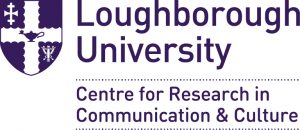
Dr Emily Harmer
Lecturer in Communication and Media Studies at Loughborough University. She is also co-Convenor of the PSA Media and Politics Group.
Email: E.Harmer@lboro.ac.uk

Section 3: News
- The press and the Referendum campaign
- The narrow agenda: how the news media covered the Referendum
- Newspapers’ editorial opinions during the referendum campaign
- Scrutinising statistical claims and constructing balance: television news coverage of the 2016 EU Referendum
- Regulated equivocation: the referendum on radio
- Referendum night goings on
- The view from across the pond: Brexit on American media
- A victory of the nation state: the EU Referendum in the Southern European press
Media coverage of British politics is stubbornly male-dominated at the best of times and EU referendum news would be no different. Eventually, Labour’s Harriet Harman made an intervention into the debate criticising the lack of visible women in the campaign. As it turned out, Harman’s intervention had some impact on the strategies employed by both sides, as women campaigners were subsequently deployed to take part in prominent televised debates; however this seemed to have very little impact on the subsequent news coverage. Analysis by Loughborough University’s Centre for Research in Communication and Culture showed that between 6th May and 22nd June, women accounted for just 25.3% of all individual sources included in television coverage and just 15.4% in the press. This demonstrates the extent to which the debate was dominated by men (Figure 1).
Many have criticised the tone, content and quality of the EU referendum campaign and its media coverage throughout this campaign. Both press and broadcasters should also be questioned for the narrow range of voices, issues and opinions that were given prominence in this most crucial political debate.
When we examine the roles that women actually take up in the coverage it is clear that women are less likely to be portrayed as exhibiting any form of expertise and much more likely to be included as ordinary citizens. On television women accounted for 16.5% of all politicians featured in the coverage, 25.5% of experts and 19.6 of business spokespersons whilst 48.1% of citizens were female. The press featured even fewer women, just 14.9% of politicians, 15.6% of experts and 10.3% of business voices. Even ordinary women were underrepresented in the press, accounting for just 39.1% of citizens (Table 1).
Despite the marginal status women occupied in the news coverage, when women were actually quoted in the press and on television their average quotation time or length were comparable with those of men. On television the average quote from a woman was 29 seconds long, compared to 28 seconds for men. Similarly, women were given 31 words on average compared to 33 words for men (Table 2). This means that when women actually appear they are granted a voice on similar terms to men, meaning that the main problem women had with regards to the the coverage was gaining access to the media in the first place.
The thirty most visible campaigners included nine women in total, with Priti Patel the most prominent woman in 9th place (making 65 appearances). Furthermore, women account for only 10% of the total number of appearances in the top 30. It is also noteworthy that Patel and London Mayor Sadiq Kahn were the only BAME campaigners to feature in the top 30 demonstrating that this most important of political discussions, one in which the spectre of immigrants was routinely called upon to emphasise the benefits of withdrawing from the EU, was troublingly presided over by not just men, but primarily by white men.
Since the news coverage was dominated by just two policy areas – the economy and immigration – the prominence of white men in the debate was rendered still more problematic. The Leave campaign and their supporters in the press pushed immigration as the dominant reason for leaving the EU, increasingly framing the issue in intemperate and inflammatory language. That such rhetoric appeared so frequently in the everyday utterances of privileged white male campaigners like Nigel Farage and Boris Johnson is deeply problematic, serving to normalise and legitimate openly xenophobic and occasionally racist sentiments which could have real and lasting consequences, reinforcing troubling ideas about who is and who is not welcome to a diverse audience of voters.
Given that immigration was one of the key issues, it is surprising that Home Secretary Theresa May was so marginal to the campaign (she made just 29 appearances in seven weeks of coverage). Secretary of State for Education Nicky Morgan was also conspicuous by her absence. Both women seem to have emerged as potential contenders for the Conservative leadership, perhaps suggesting that strategic motivations explain their lack of presence in the campaign. Even Scottish First Minister Nicola Sturgeon failed to make much impact in the media debate, especially given that she had linked the outcome of the EU referendum to a potential future Scottish Independence referendum, something which is only now receiving the attention it deserves.
Many have criticised the tone, content and quality of the EU referendum campaign and its media coverage throughout this campaign. Both press and broadcasters should also be questioned for the narrow range of voices, issues and opinions that were given prominence in this most crucial political debate.





